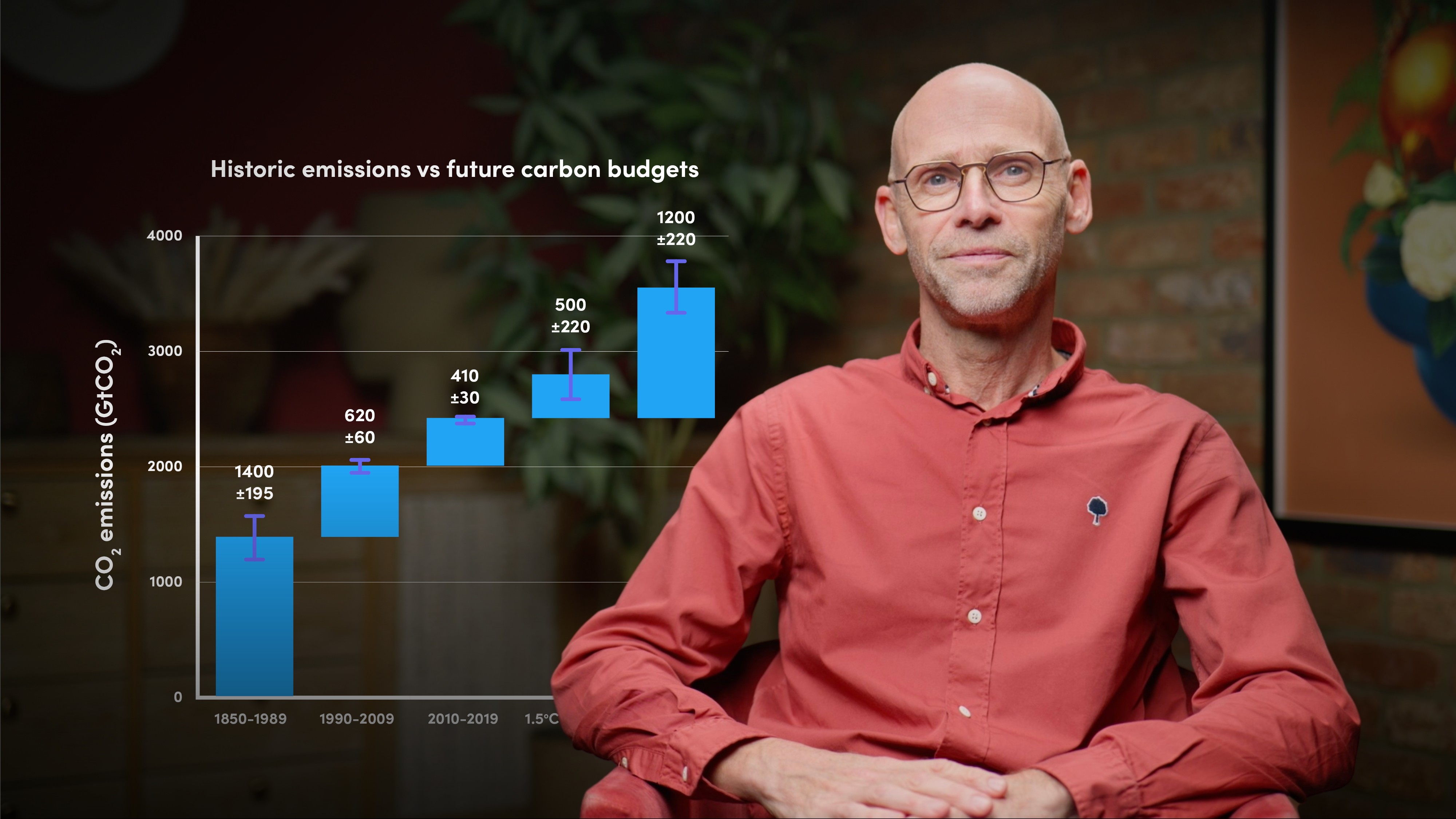What is a carbon budget and why do we need it?
A carbon budget refers to the total amount of carbon emissions allowed to stay within a certain temperature threshold, such as those outlined in the Paris Agreement. The Working Group 1 reports show that the increase in global mean temperature has a near-linear relationship with cumulative CO2 emissions. In order to meet the Paris Agreement target of 1.5°C, it is necessary to limit total future CO2 emissions (from 2020) to 500 GtCO2. The budget corresponding to a total temperature increase of 2°C. C is 1200 GtCO2. Given the long duration for which CO2 remains in the atmosphere, the CO2 contribution to the peak temperature depends primarily on total CO2 emitted, and is relatively insensitive to the moment when the CO2 is emitted, be it this decade or the next.
Meeting a carbon budget involves:
- Achieving net zero CO2 emissions
- Total area under the curve of net annual CO2 emissions is no greater than the budget.
What is the carbon budget for aviation?
Estimating aviation’s carbon budget is complex as it depends on numerous technical, political and social factors. Taking this into account, the IEA, the International Energy Agency, estimates that for pathways that limit temperature increases to between 1.5 and 2 degrees, between 22 and 26 Gt of CO2 are allocated to aviation for the 30-year period from 2020 to 2050.
What is the IPCC’s view on emission mitigation strategies?
IPCC classifies the strategies as avoid, shift & improve options
Avoid is where the consumer chooses to use none of, or less of, a resource or service. IPCC suggests that the greatest avoid potential comes from reducing long-haul aviation and providing short-distance low-carbon urban infrastructures to reduce dependency on automobiles.
Shift is where the consumer switches from a less sustainable method of consumption to a more sustainable one. According to the IPCC, the greatest shift potential comes from switching to plant-based diets. A behavioural change where some travel by regional flights is replaced by high speed rail travel is also a good shift lever.
Improve is where the climate impact of existing goods or services is improved, by changing design concepts or making technological improvements to. The greatest improve potential comes from the building sector. But aircraft efficiency improvements are also within this category.
It is clear that the aviation sector is clearly both targeted and vulnerable to social change. Effective mitigation of the climate impact of aviation is one of the means to reduce that vulnerability.
What can be done regarding the mitigation of non-CO2 emissions?
IPCC states that aviation is the sector with the most distinct difference between 10 and 20 year time horizons due to the dominance of its short-lived climate forcers (SLCFs). Aviation will be one of the sectors targeted, because one of the conditions necessary to achieve the Paris Agreement temperature goals is to decrease the short-term peak temperature by strong reductions in short-term forcers.
What are the regulatory and economic aspects to be considered?
The Paris Agreement addresses the emissions from fuel used for aviation, however they are calculated as part of the national greenhouse gas inventories of countries, but are excluded from national totals and reported separately. Hence, emissions from domestic flights are accounted for in the NDCs, the Nationally Determined Contributions, of the member states. Emissions from international flights can be included at the discretion of each country.
What is the approach developed by ICAO to address the emissions from international aviation?
Develop a global market-based carbon offsetting measure - Carbon Offsetting and Reduction Scheme for International Aviation (CORSIA). CORSIA’s aims to promote carbon neutral growth through obliging airlines to purchase carbon credits to offset emissions above the reference emissions. Although the IPCC recognises that carbon pricing is effective in promoting the implementation of low cost emissions reductions, it is critical of CORSIA as it does not attempt to cap emissions and seeks to compensate emissions by the use of approved offsets.





